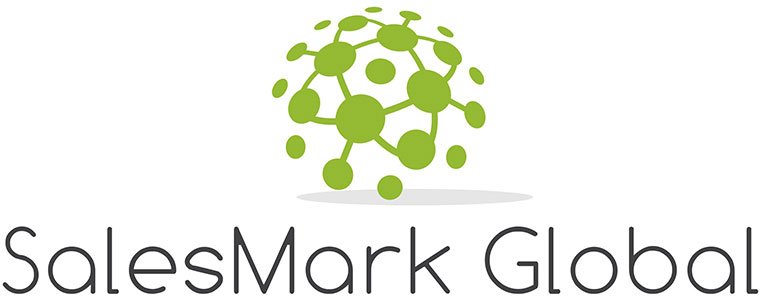Audience Segmentation in ABM simplifies the B2B buying process by providing a targeted, personalized engagement strategy that enhances ROI, shortens sales cycles, and increases deal size.
ABM (Account-based Marketing) is like a map in the competition of marketing, where the road is like a labyrinth and ABM, the map, offers us a pictorial description of the route in front of us at every single step we take. Hence, you think out your actions meticulously, steer clear of the blind alleys, and accomplish your target much quicker and with less exhaustion. However, to be able to move at all, one must first receive the correct guidance to the places.
Audience segmentation is your GPS system to gain quality leads and ensure maximum conversion rates. Companies that seek leads spend a cost on a certain campaign to scour through the not-so-humbling customer base. To churn the gold from a pool as large as your industry, audience segmentation is necessary. Identifying the differentiators and eliminating irrelevant audiences at every phase definitely increases your chances of a positive outcome in return, reducing the cost B, which can be as low as half the A cost. And as a cherry on top, generating a revenue as good as over 200%.
Table of Contents
1. Is ABM on the rise?
2. Why Is ABM Not Universally Adopted Yet?
3. 3 steps to Data-driven Segmentation in ABM
4. AI-driven Audience Segmentation
5. How to Churn Maximum Benefit Out of AI-driven Segmentation
5.1 Multi-Dimensional Segmentation
5.2 Tiered Segmentation Model
5.3 Cross-Functional Alignment
5.4 Real-Time Analytics & Ongoing Refinement
5.5 Personalized Multi-Channel Orchestration
6. The Future is Audience Segmentation
Conclusion
1. Is ABM on the rise?
Picture a marketing executive who is skeptical about adopting ABM. At first, they face stagnating revenue streams and limited growth using traditional marketing. ABM changes everything. By focusing on high-value accounts and aligning marketing with sales, it unlocks hidden revenue. This shift begins a transformative journey. The global ABM market is projected to have a compound annual growth rate of more than 12%, and it may surpass USD 1 billion by 2025 according to Mordor Intelligence. Adopting ABM revitalizes business strategies and realigns goals, resulting in substantial revenue increases. This showcases undeniable growth and success.
Middle-sized companies are now adopting simple platforms for effective ABM practices. Big companies are at the forefront of running intricate programs that utilize intent data and AI insights. ABM simplifies the B2B buying process by providing an engagement strategy that is both targeted and personalized. This has the effect of enhancing ROI, shortening sales cycles, and increasing the size of deals. The emergence of new technologies such as artificial intelligence and predictive analytics has made ABM a strategy that guarantees revenue growth in the future.
2. Why Is ABM Not Universally Adopted Yet?
An open-hearted presentation of ABM’s potential and pitfalls known through the sharing of statistics, such as the 80-97% ROI and >200% revenue lift reported by marketers, suggests that the precision of segmentation is what divides the winners from the losers in the ABM programs and is thus attractive to the executives who are looking for guaranteed winning strategies. Nevertheless, factors such as the low quality of data and the necessity of constant model updates remain as challenges.
In more detail, a multinational IT company once suffered heavily due to wrong and old data that caused the targeting to be misaligned, thus leading to huge amounts of money being thrown away on the wrong things and losing the high-value accounts. This incident justifies the urgency of the demand for precise segmentation. The issues can be tackled through collaboration between marketing and sales departments and the application of data-driven segmentation.
3. 3 steps to Data-driven Segmentation in ABM
Digital transformation has resulted in a significant shift in the approach taken by ABM as it has moved from the use of broad and manual segmentation techniques to a data-driven strategy. This change not only enhances marketing strategies but also makes more advanced targeting and differentiation possible through the use of a mix of data signals beyond the usual firmographics. The suggested segmentation model comprises low-priority accounts hit through One-to-Many, medium-priority through One-to-Few, and high-value through One-to-One.
Segmenting facilitates the generation of extremely pertinent marketing campaigns, which in turn leads to the increase of ROI, better resource allocation, as well as the improvement of personalization and customer loyalty.
3-Step Segmentation Process:
Step 1
Split Total Addressable Market (TAM) into Market Segments: Identify accounts fitting the ICP, suitable for broad content marketing.
Step 2
Split Market Segments into Target Accounts: Focus on accounts nearing buying decisions, appropriate for fairly personalized ABM efforts.
Step 3
Create Priority Account Segments: The orchestration of communication across different touchpoints contributes to ensuring a consistent, interactive, personalized brand experience that will attract and handhold your visitors to conversions.
4. AI-driven Audience Segmentation
Leading corporations such as IBM and Cisco have experienced improvements in engagement and conversion rates by utilizing AI-powered ABM tactics that synchronize campaigns via multiple channels such as email, LinkedIn, phone, and digital ads. The CMO Club asserts that the use of synchronized multi-channel campaigns rather than traditional ABM approaches can escalate account engagement by as much as 72%.
5. How to Churn Maximum Benefit Out of AI-driven Segmentation
ABM has always been a ‘best if used right’ aid for quality lead generation and conversion. Getting the most out of it is imperative to reach maximum ROI. AI serves as a two-way street, one leading to advantage and the other leading to disadvantage. To board the advantageous route, one needs to incorporate a solid best-in-class foundation into the process. The benefits will reap their benefits in no time then.
5.1 Multi-Dimensional Segmentation
Go beyond simplistic firmographics and include behavioral information, intent signals, technographics, and customer pain points. By adding multiple dimensions, you are able to create more richness around a target audience’s profile to become more targeted.
5.2 Tiered Segmentation Model
Segment accounts based on value and sales-readiness in a tiered methodology that is divided up into thirds—one-to-many for mass engagement, one-to-few for relevant nurturing, and one-to-one for true personalization. This also helps to balance resources in a meaningful manner as well as return.
5.3 Cross-Functional Alignment
Bring marketing and sales to the same account list, have shared objectives, and co-create KPIs. Strong alignment and coordination need to happen to sustain momentum development and ensure ongoing ROI.
5.4 Real-Time Analytics & Ongoing Refinement
Integrate AI and analytic platforms to continuously evaluate the effectiveness of the campaign, adjusting targeting as new information is revealed from your activity on that account and making ongoing adjustments to the segmentation model for relevancy to the market.
5.5 Personalized Multi-Channel Orchestration
Orchestrate messaging across touch points to collectively create a cohesive, consistent, and personalized branded experience that increases engagement and improves conversion.
6. The Future is Audience Segmentation
Audience segmentation is not merely a part of ABM, but it’s quickly becoming what will distinguish the high-performing ABM programs from the mediocre ABM programs. As AI and predictive analytics and real-time intent data become more powerful and available, segmentation will grow in depth and scale.
According to Super AGI, in 2025 over 70% of marketers will have active ABM programs with the rise in AI-enabled hyper-personalization and multi-channel orchestration. The ABM market continues to expand rapidly, nearing $2 billion globally by 2032, signaling that advanced segmentation methodologies will remain critically important in the long term.
Conclusion
Artificial intelligence is changing account segmentation from a static, manually built list type of work to real-time dynamic AI-driven capabilities that are crucial for successful omnichannel Account-Based Marketing (ABM). With this transformation, ABM programs can not only target the accounts but also understand, predict, and engage each account at scale, thus providing them with personalized marketing that fits their needs.
AI-driven segmentation consists of several machine learning algorithms that process a large range of data such as firmographics, technographics, intent signals, and real-time behavioral interactions, to find and rank the accounts that have the highest potential of conversion. This automation increases accuracy and the ability of the program to handle a large number of accounts while at the same time continuously updating segment profiles as account changes.
Visit Our SalesMarkBlog Section to Uncover the Sales Strategies That Ignite Your Sales Journey!





